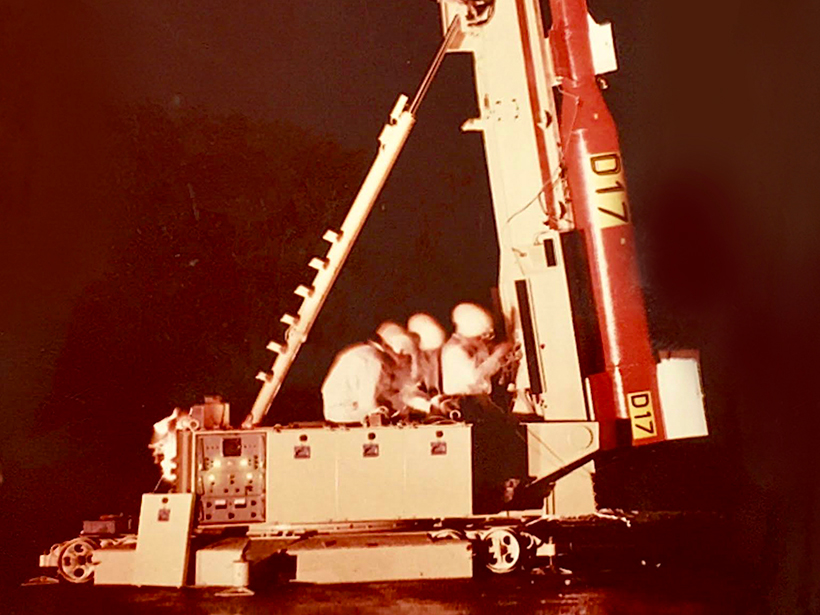Source: Journal of Geophysical Research: Space Physics
On the night of 17 October 1966, as the rays of an aurora danced across northern Norway, the chilly calm was suddenly broken by the searing blast of a rocket launch. The suborbital sounding rocket arced across the night sky, streaking through the aurora and into the space beyond. Its mission was to make the first measurement of an electric field in space.
At the launch site near the settlement of Andenes, 300 kilometers north of the Arctic Circle, the team waited, dressed warmly in knit sweaters and plaid flannel, monitoring the rocket’s progress as it reached the peak of its trajectory at 400 kilometers high. When the data came in, the team broke into wild celebrations; one member took his shirt off and whipped it over his head.
This groundbreaking experiment, originally reported in the Journal of Geophysical Research in 1967, proved that electric fields do indeed course through the space surrounding Earth, something predicted by theory for years but never before measured. It also paved the way for dozens of satellites that have used the technique since, mapping out the complex geometry of the electric fields and the role they play in the magnetosphere. Now, 50 years later, one of the team members of the original experiment, has authored a review of the technique, known as the double-probe method.
In his review, Mozer describes the launched probe as a spacecraft is equipped with pairs of separated sensors that measure the difference in potential between them. To measure the electric field in all three axes, a total of six sensors were used. Four were mounted around the craft at 90° intervals on wires, designed to splay outward as the spacecraft spun. Two more were mounted on rigid booms along the spin axis.
Not only did the Andenes mission succeed in making a measurement, but it also showed that the electric field was more complex than scientists had assumed. The field ran not just perpendicular to the magnetic field, as expected and predicted by the classic “right-hand rule”; it also ran parallel to the magnetic field, evidence of a more turbulent nature.
The mission’s success paved the way for dozens of future satellites, including NASA’s ISEE, Polar, CRRES, FAST, Van Allen Probes, MMS, and THEMIS satellites and the European Space Agency’s Cluster mission, the last four of which are currently operational. Together, they have helped to map out the electric fields in the magnetosphere, observed magnetic field lines fracturing and reconnecting, tracked plasma waves, and measured the energy that auroras carry down their field lines.
However, one weakness of this setup was that the two rigid booms along the spin axis usually can’t be made as long as the four wire booms, making the data quality worse in that direction. Mozer suggests that future science missions rely not on spinning the entire spacecraft, but instead on spinning pancake-shaped mounts. Two of these spin tables with four booms each can be placed on adjacent faces of the craft so that the sensors can cover all three axes. The technology of spin tables has been used successfully on commercial and military satellites, as well as in NASA’s Polar mission. (Journal of Geophysical Research: Space Physics, doi:10.1002/2016JA022952, 2016)
—Mark Zastrow, Freelance Writer
Citation:
Zastrow, M. (2017), Retracing the first spaceborne electric field measurement, Eos, 98, https://doi.org/10.1029/2017EO065739. Published on 04 January 2017.
Text © 2017. The authors. CC BY-NC-ND 3.0
Except where otherwise noted, images are subject to copyright. Any reuse without express permission from the copyright owner is prohibited.

